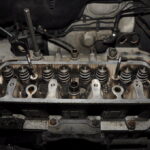Do Newer Cars Last Longer than Older Ones? The Facts
We all want our cars to preserve top-notch condition forever, right?
Considering the purchase’s installments, fuel, insurance, maintenance, and occasional parking fees, keeping a car is expensive to many people. Therefore, it is natural for them to want their cars to stay functional for as long as possible.
Nevertheless, once a car leaves the dealer, it is up to the owner to preserve that functionality. Keeping it in the typical conditions of use is a big part of this task, but even more important is to understand and fulfill its maintenance needs. That is applicable to all cars regardless of age.
Do Newer Cars Last Longer?
It depends on the owner rather than on the car.
Any car can last for long or not, depending on how its maintenance is executed. Classic cars stay perfectly functional for decades because their owners take pride in catering to their every need, from routine verifications to eventual part replacements. With that level of attention, there is no reason why newer cars should last shorter.
The real issue to analyze here is maintenance.
Newer cars don’t always last longer, because they are more complex, especially when it comes to electronics – it’s enough to say that older cars simply don’t have any electronic components. While those components enable it to perform better than ever in almost every aspect, keeping them in good conditions demands money and time, sometimes, because some replacement parts are more difficult to obtain than others.
Another important topic is planned obsolescence. Over time, it becomes more difficult to find spare parts and specialized workshops for newer cars because the whole industry has turned itself to its successors. Besides, aggressive marketing campaigns make it less desirable to own a car for too long; this task is always possible but becomes more expensive and less interesting by the year.
When it comes to older cars, comfort and safety seem worthy of mention at first because they comply with much lower standards than those of newer models. However, such an inexorable consequence should be considered from the moment the owner decides to buy/keep an old car: it is impossible to expect modern standards from a car produced years, sometimes decades ago.
What is actually worrying about older cars is their pollution standards. Large cities are imposing more and more restrictions on them, so there will be a moment from when it will be impossible to drive older cars in several regions because of how pollutant they are. In a way, that is a limitation on how long they last.
Also read: Is Buying a 10-Year-Old Car Worth it? The Truth…
Why Does it Seem Like Newer Cars Last Short?
Maintenance is more complex on newer cars and not all people pay attention to that.
The most relevant difference in this regard is that newer cars have increasingly complex electronic systems for everything: comfort, entertainment, performance, safety…
In a modern car, all components work together: they are highly integrated to continuously exchange data and provide better overall service. For example, selecting the “comfort” driving mode in a luxury car makes the suspension softer and gear shifting more relaxed. Therefore, when one component fails or simply needs attention, many others are directly affected.
While such a level of connectivity makes their dynamic behavior better than ever, it comes at a cost. Owners must closely follow the manufacturer’s instructions regarding maintenance at all times because cost-cutting actions such as repairing some parts before than others or replacing them with subpar alternatives may make the situation worse over time.
Trending Video: How to Easily Bring Back to Life any Old Car Battery and Save Tons of Money (click to watch)
Unfortunately, poor maintenance is a certain way to accelerate wear on any car, regardless of its age. Newer cars are more frequently affected by that because their complex maintenance tends to be neglected by people.
What is Better in Newer Cars that Let Them Last Longer than Ever?
Considering the car alone, rust resistance is the most expressive indicator here.
Decades ago, rust was one of the biggest problems in car ownership. It may happen for many reasons, and some are not simple to control – simply living in coastal cities, for example, is enough to accelerate this type of deterioration. Automakers had to offer rather short warranty periods against rust because it was difficult to keep cars protected for long.
Nowadays, technology has been the best agent in dealing with that issue. The industry as a whole has worked on metal production, thermal processes, paint production and application, and the use of chemical additives. The situation has become so much better that it is possible to say that, with the exception of extreme conditions, the problem of rust has been eliminated from modern cars.
Considering the car and its surroundings, energy and emissions are the indicators to highlight.
Moving towards electric propulsion makes cars more sustainable. That does not affect each one’s duration but makes the use of personal automobiles, in general, easier to last for a long time.
While it is possible to keep improving internal combustion engines, this technology is reaching its limit; further developments will be exponentially more expensive and yield less and less significant results. Replacing them with electric motors altogether minimizes the pollution generated by each car and concentrates the problem on how the energy is generated, which exceeds the scope of car owners.
Also read: 11 Real Reasons Why Older Cars are Better than New Cars
How to Make Your Car Last Even Longer?
Once again, maintenance is the key.
Cars need short-term repairs such as replacing fluids and realigning wheels; medium-term repairs like replacing tires and brake pads; and long-term repairs such as repairing the engine. It is not necessary for the owner to know all that, of course, but it is crucial for them to find a trustworthy repair shop and respect the recommended intervals to take the car there.
Another variable to take into account is obvious, but necessary: dealing with costs. Setting aside the chances of falling into a scam, it is normal that some components come at a high price. Alloy wheels, for example, are produced with selected materials and precise manufacturing because they balance aesthetic appearance and mechanical resistance; some cars have wheel models specifically designed for them.
Some car owners look for cost-cutting actions such as delaying the repair of some parts to favor others and/or replacing components with others of lower quality. For example, it is common to replace worn tires with remolded ones, which are old tires with a revised structure and a new external layer of rubber. They are much cheaper than new ones, but not recommendable.
Second-grade components were not extensively tested in severe conditions and, therefore, do not offer the same levels of overall quality. Cheap lubricant oil, for example, may not properly fulfill the engine’s requirements. Repairing rims rather than replacing them may affect their shape and composition. Remolded tires are often weaker than new ones, and so on.
In short, poor maintenance reduces the car’s ability to resist even normal conditions of use. It is an easy way to accelerate its wear and even make it more likely to fail and cause sizable problems.






